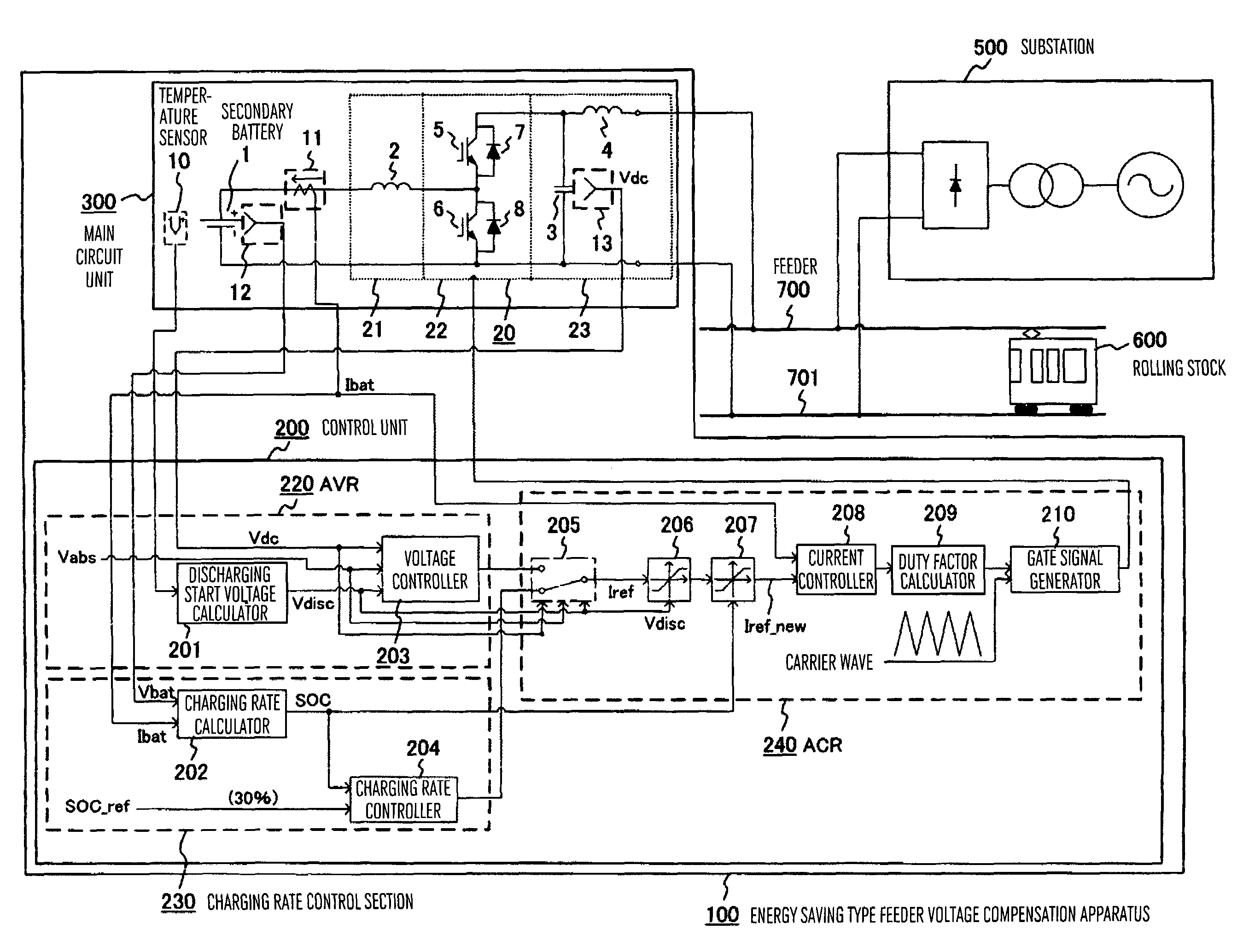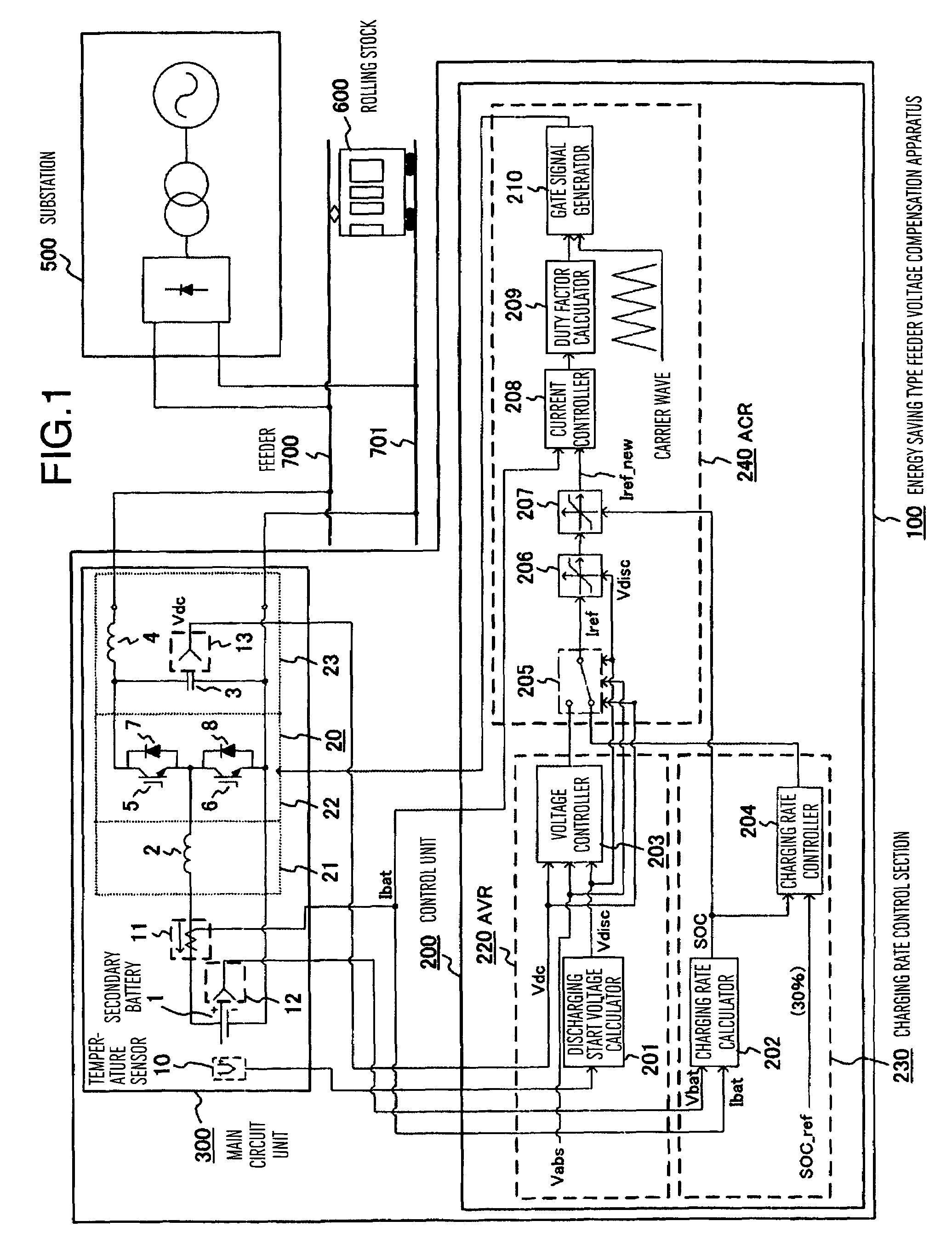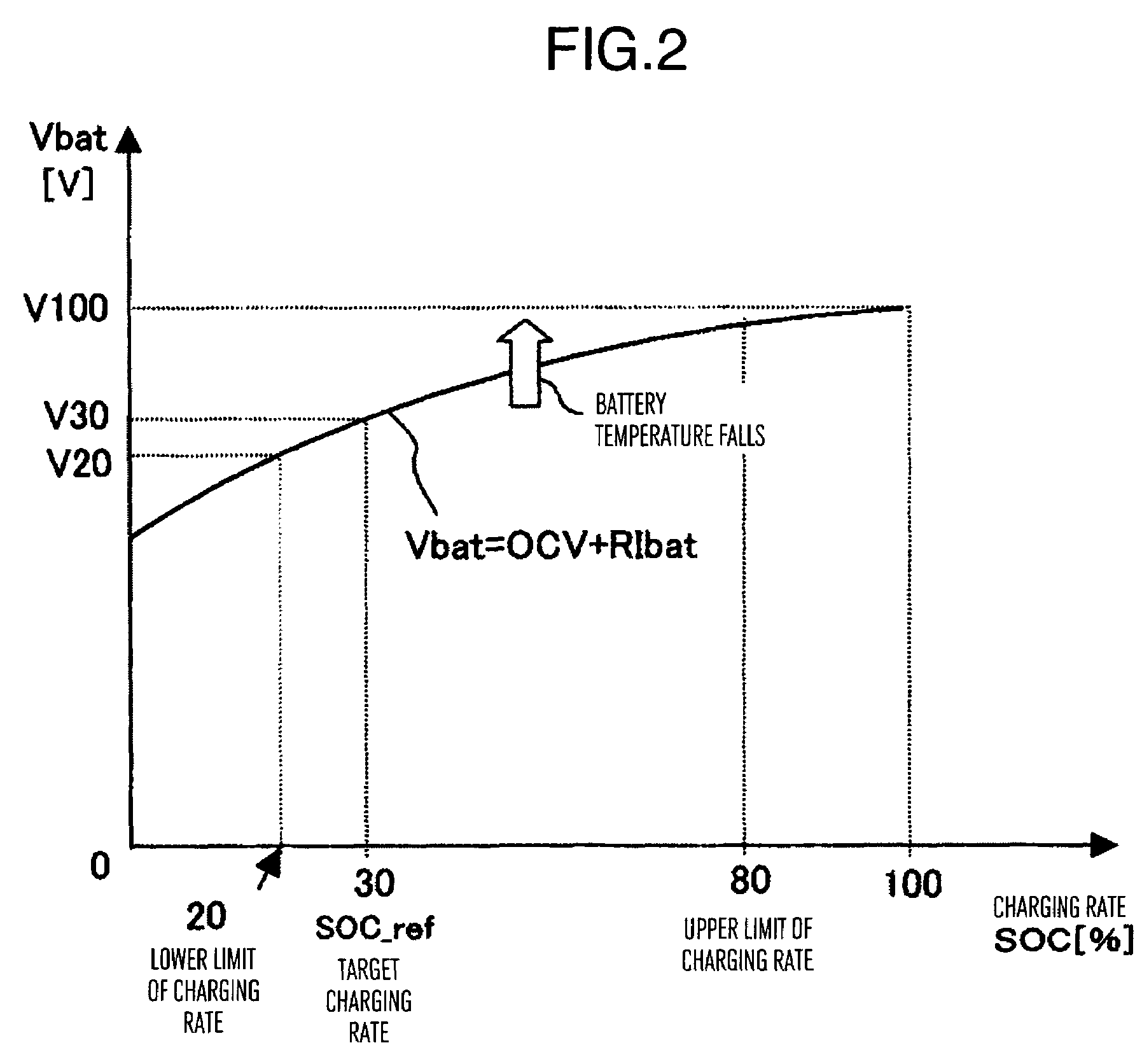Energy storage type feeder voltage compensation apparatus and method of controlling feeder voltage
a feeder voltage and compensation apparatus technology, applied in the direction of dynamo-electric converter control, secondary cell servicing/maintenance, toy trackways, etc., can solve the problems of lowering the availability of devices and electric rolling stock becoming uncomfortable to ride, so as to reduce the internal resistance of secondary batteries and reduce the loss of charging and discharging , the effect of increasing charging and discharging power
- Summary
- Abstract
- Description
- Claims
- Application Information
AI Technical Summary
Benefits of technology
Problems solved by technology
Method used
Image
Examples
first embodiment
[0026]A first embodiment of the present invention will now be described with reference to FIGS. 1 to 5.
[0027]FIG. 1 is a general configuration diagram of an energy type feeder voltage compensation apparatus according to a first embodiment of the present invention. An energy saving type feeder voltage compensation apparatus (hereafter referred to simply as voltage compensation apparatus) 100, a substation 500, an electric rolling stock 600, a feeder 700, and rails 701 are shown. The voltage compensation apparatus 100 is connected in parallel to the substation 500 and the rolling stock 600 via the feeder 700 and the rails 701. The voltage compensation apparatus 100 includes a main circuit unit 300 and a control unit 200. First, the main circuit unit 300 will now be described.
[0028]In the main circuit unit 300, a secondary battery 1 is connected to the feeder 700 and the rails 701 via a power converter 20. In the present embodiment, the power converter 20 is formed by interposing a swi...
second embodiment
[0055]A second embodiment of the present invention will now be described with reference to FIGS. 6 and 7.
[0056]FIG. 6 is a general configuration diagram of an energy saving type feeder voltage compensation apparatus according to the second embodiment of the present invention. The present embodiment differs from the first embodiment in that control for raising the charging rate is previously exercised when the temperature of the secondary battery has become low. After the charging rate has become high, the discharging start voltage Vdisc is altered to the second discharging start voltage Vdisc2, which is higher than the no-load output voltage Vdc0 of the substation in the same way as the first embodiment. As a result, it is possible to increase the quantity of power that can be discharged, before the discharging running. Therefore, a greater temperature rise at the time of discharging running is expected.
[0057]Hereafter, the same function units as those shown in FIG. 1 are denoted by...
third embodiment
[0063]A third embodiment of the present invention will now be described with reference to FIG. 8.
[0064]FIG. 8 is a general configuration diagram of an energy saving type feeder voltage compensation apparatus according to the third embodiment of the present invention. The present embodiment differs from the first embodiment in that there are a plurality of energy saving type feeder voltage compensation apparatuses each including a secondary battery and a power converter. A voltage administrator for exercising general control over the energy saving type feeder voltage compensation apparatuses is provided. The voltage administrator outputs a charging start voltage and a discharging start voltage. As a result, charging and discharging of the secondary battery become possible even if the substation and the rolling stock are not connected.
[0065]Hereafter, only points that are different from the preceding embodiments will be described. In FIG. 8, the same function units as those shown in F...
PUM
 Login to View More
Login to View More Abstract
Description
Claims
Application Information
 Login to View More
Login to View More - R&D
- Intellectual Property
- Life Sciences
- Materials
- Tech Scout
- Unparalleled Data Quality
- Higher Quality Content
- 60% Fewer Hallucinations
Browse by: Latest US Patents, China's latest patents, Technical Efficacy Thesaurus, Application Domain, Technology Topic, Popular Technical Reports.
© 2025 PatSnap. All rights reserved.Legal|Privacy policy|Modern Slavery Act Transparency Statement|Sitemap|About US| Contact US: help@patsnap.com



